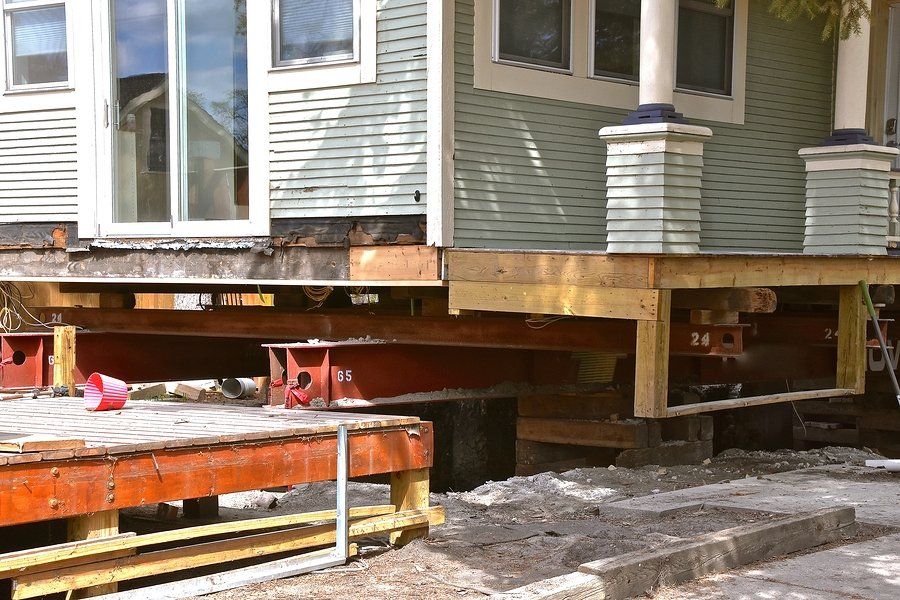Crawl Spaces Nashville, Tennessee

Your crawl space is an area of your property that gives you access to lots of plumbing and wiring that operates various features of your home. It is an area of your property that requires the right care and maintenance. If your crawl space has issues or damage it will allow water to pass through which can lead to infestations as well as water damage. If you would like to learn more about the crawl space service Nashville, Tennessee that we provide you should reach out to us via phone or by email today.

Contact Us
Prevent Infestations
If your crawl space is not well kept, it may allow water to pass through. If this happens, it will cause your crawl space to become damp. When your crawl space is moist, it can quickly provide an ideal breeding ground for insects such as ticks or termites. Ticks can spread harmful diseases on your property, and other Infestations can cause wood to rot. Even if this does not happen, do you really want to share your home with thousands of insects? If you carry out the proper maintenance and care of your crawl space, you can avoid all of this.
Protection Against Mold and Mildew
Mild and mildew can cause untold damage to your property. They cause rot and decay, mold and mildew can also ruin the air quality with a foul smell. Mold will also significantly devalue your property as you may need expensive repair work to remove it. Mold and mildew also pose health risks as they are dangerous to inhale. To prevent mold and mildew from getting into your property through your crawl space, you should hire us to maintain proper maintenance. This will prevent moisture from entering, which will stop mold from forming in the first place.
Convenient Access to Wiring and Plumbing
A lot of houses and properties have their wiring and plumbing running through their crawl space. This is for many reasons, such as ease of access and keeping it out of sight in the rest of your home. If you have an old, damaged, or poorly maintained crawl space, you may end up damaging these. A well-kept crawl space provides you with a convenient and effective way to access and protect these essential components of your property.
Prevent Water Damage
Water damage is always an expensive and highly problematic issue. Water can cause severe damage from even the smallest leak if it is not found early enough. Water can destroy possessions and structures as well as start the process of rotting. This will result in the need for expensive repairs or replacements. If your crawl space is not in good working condition, it may allow water and moisture to pass through. If you would like to prevent this and avoid paying for expensive repairs, get in touch with us today to book our crawl space services. It could save you a fortune and give you protection against water damage.
Crawl Space Repairs and Mold Removal
Crawl space encapsulation, also called finished basement construction, is closing off a crawl space or "well" to prevent moisture from entering the home. A sump pump and dehumidifier add to this sealed area, making it inhospitable to mold and mildew. There are two types of crawl space dehumidifiers, electronic and hydronic. Some homeowners choose to invest in both, so they have full access to their crawl space's water supply should it become compromised.
What is Crawl Space Insulation?
Crawl space insulation consists of sheets of foam, cellulose, or synthetic materials installed between the soil and the foundation. Insulation is effective at reducing humidity but not at preventing water entry. Surrounding walls will still be exposed to moisture if there is no insulation; the only protection is a vapor barrier. If the walls are constructed of concrete or bricks, waterproofing will need to be done before the insulation.
Concrete walls and concrete slabs may have cracks or openings that will allow moisture into the home's interior. If the holes or cracks are small, vented crawl spaces can be installed around them using silicone caulk, exterior wood fiber batt, or other forms of foam or membrane. The hole's interior can be lined with mineral wool or wood chips to keep molds and mildew at bay.
If the holes or cracks are large, vented crawl spaces will be required to be sealed off with a vapor barrier. These barriers come in different configurations and materials and should be chosen depending on the space's moisture level and ventilation. Natural stone and brick are among the most popular choices for vapor barriers, as they are easy to clean and maintain. However, Wood is a poor choice for larger crawl spaces and should be used only in small areas where moisture and mold are unlikely to be an issue.
Once the outer layer of insulation has been installed, installing the second inner layer is time. Fiberglass is a good material for this application, as it is relatively inexpensive and tough. It is also lightweight and easy to install. A fiberglass liner should be placed on the floor sub-floor, then wooden batt boards or drywall below it. After the insulation is in place, a vapor barrier should be applied to the upper and lower walls and then the floor. Finally, the roof should be covered with another layer of fiberglass or cellulose fiberglass.
After the initial insulation process is complete, a vapor barrier should be applied to the outside and inside. Wood or mineral wool is a great choice for this application since they are easy to clean and maintain. When finished, the crawl space's surface will be protected from moisture and mold by a vapor barrier and moisture-proof upper and lower walls and ceiling.
Air Ducts & Humidifiers
Add a ventilation system to your crawl space can be expensive and time-consuming. However, if you have an existing duct system, you can retrofit to a ductless system. A traditional air conditioning system includes an air duct and a humidifier. Ductless systems only include a humidifier, which has no maintenance and is less expensive over time. Ductless systems' benefits include low energy usage, better indoor air quality, more flexibility, and energy efficiency.
If you are considering crawl space dehumidification, you should also consider a dehumidifier with a vapor barrier. In areas where there is significant humidity, a vapor barrier will help prevent wood rot, stains, and mold growth due to moisture. In areas where you would like to use a dehumidifier but don't want to build in a vapor barrier, there are endless dehumidifiers that you can purchase. These are much quieter than their certified counterparts and can also effectively lower the relative humidity in your home. Of course, you may need to try several different models before finding the one that works best for your needs and your budget.
